- S.D. Eibar ready for maiden La Liga outing
- SD Eibar stengthen ahead of debut La Liga season
- Can ‘Super Mario’ live up to expectations in Madrid?
- MAN IN THE GROUND – Brentford 0 – 4 Osasuna
- Historic Basque derby welcomes S.D. Eibar to La Liga
- Munich to Madrid, via Brazil – Tony Kroos
- Rakitic in Spanish Switch
- Can Spain find redemption in Rio?
- Viva Espana! A season of redemption for Spanish football
- From the old to the new: who can fill the void in years to come for La Roja?
UD Almeria and their ups and downs at the Estadio Mediterraneos
- Updated: 5 November, 2012
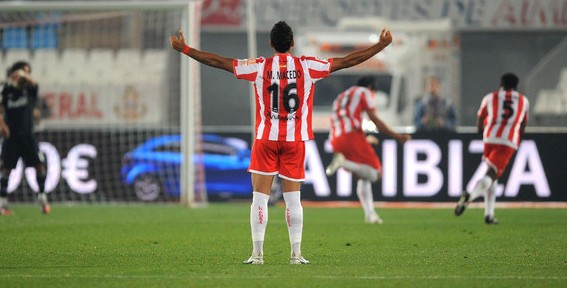
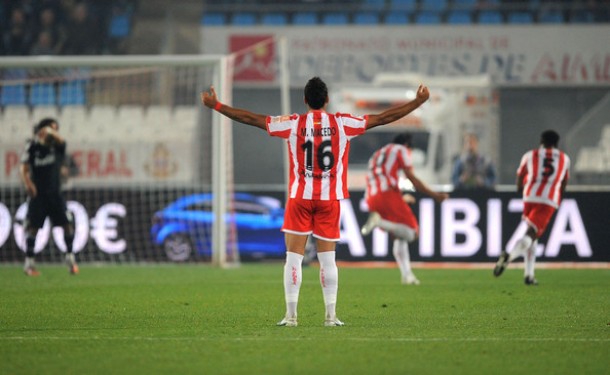
Photo: Denis Doyle/Getty Images Europe
Following football in Almeria must be a similar experience to backing an outsider in the Grand National. It may clear a few hurdles, but sooner or later you know that it’s going to come crashing down. Over the years numerous clubs have tried to last the pace, only to be floored by financial obstacles. The current footballing representative of this city in the south east corner of Andalucía, Unión Deportiva Almería, does however have a touch of thoroughbred about it. Whether they ever make it to the winners enclosure is debatable, but they seem to have enough about them to avoid a trip to the knackers yard.
UD Almeria is the eighth team from the city to try its luck in the senior leagues. They were formed as Almeria CF in 1989 by a group of supporters who were unhappy with the way that the city’s then senior team, CP Almeria was operating. Three quick promotions saw the club debut in La Segunda, but the upward trajectory stalled at this point, only escaping relegation in the 95-96 season with a draw in the final match. They finally succumbed to the drop a year later and the slide continued and by the start of the 1999-00 season, Almeria CF had to endure a season-long stay in the Tercera, a level lower than CP Almeria.
The start of the millennium was a busy time for football in Almeria. Whilst Almeria CF was steading itself in Segunda B, CP Almeria was about to implode. In addition, the city had won the right to host the 2005 Mediterranean Games and this meant the development of a new stadium closer to the centre. CP Almeria failed to complete the 2000-01 season, folding during the Christmas break, and some of the club’s players crossed town to join Almeria CF. On 10 January 2001, Almeria CF became Unión Deportiva Almería and the newly christened club finished the season in eleventh place.
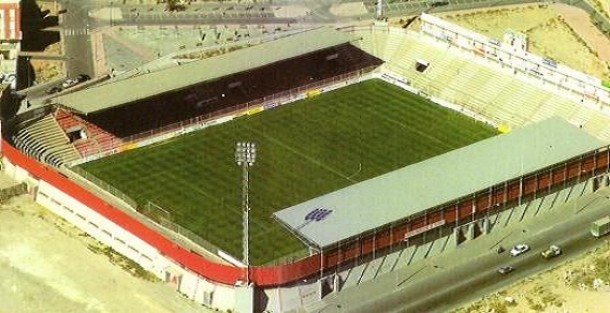
The 2001-02 campaign would see UD Almeria emulate their success of seven years earlier, by winning promotion to La Segunda. It wasn’t an easy transition as the club struggled to establish itself in La Segunda, finishing 18th in 02-03 and 16th a year later. That 2003-04 season also saw UD Almeria’s last match at the Estadio Juan Rojas. On 14 June 2004, the club beat Sporting Gijon by two goals to one, before first team games were moved to the new Estadio de los Juegos Mediterráneos for the start of the 2004-05 season. The Estadio Juan Rojas continued to be used by UD Almeria B and the club’s youth teams, although much of the stadium is now cordoned off due to structural concerns.
The summer of 2004 also saw the arrival of Alfonso García Gabarrón as club president. After a sluggish first season, which saw the appointment of four first team coaches, the club started to make some progress, finishing sixth in 2005-06. The following season saw UD Almeria finish second in La Segunda and emulate AD Almeria, the only other club from the city to reach La Primera. Under the guidance of coach Unai Emery and with ex-Real Madrid striker Álvaro Negredo banging in the goals, UD Almeria surpassed all expectations in finishing eighth.
Emery departed to Valencia at the start of the 2008-09 season and Alfonso García Gabarrón started up the managerial merry-go-round. Five coaches came and went over the next three seasons of diminishing returns. Eventually, UD Almeria slipped back into La Segunda at the end of the 2010-11 season, winding up in bottom spot, with some hefty defeats to Barcelona and Real Madrid along the way. Some consolation was achieved when the club reached the semi-finals of the Copa del Rey for the first time.
So far as Athletics stadiums go, I quite like the Estadio Mediterráneos. Admittedly, that is a back-handed compliment as it is still a fairly impractical football stadium, but Antonio Lamela’s design has some nice touches. The original layout of 15,000 seats was hindered by an additional gap of 10 metres or so between the front seats and the athletics track. This was countered by raising the seating tier, so that the front seats of each block were 2 metres off the ground.

Instead of a single tier that sweeps around the whole ground, it is broken up into four separate stands by the concrete pylons of the floodlights that then pierce through the steel framework of the cantilevered roof, like four immense hairclips. The floodlights then gently lean towards the pitch, providing a nice contrast to the sweeping curves of the roof.
The municipality had forked out 21 million euros on this new multi-sports arena and then several million more in the summer of 2010 when additional seats were added. Four rows of white seats were built in front of the existing stands, and additional blocks of red seats were added at the rear of the end stands, to raise the capacity to 22,000. To be honest, the stadium was rarely full when UD Almeria played in La Primera, so it wasn’t money well invested, particularly as another change was made in June 2012.
In a move that mimicked the changes seen at Cagliari and other Italian stadiums, three temporary stands were erected close to the pitch and over the athletics track. The fourth side, the main tribuna which houses the players, VIP & media facilities was left unaltered. This gave the stadium a temporary capacity of 10,000, which is perfectly adequate when the home games average just over 6,000 spectators.
The stadium now sees matches every weekend, as Almeria B switched their Segunda B matches to the arena from the start of the 2011-12 season. As a club, UD Almeria finally appear to have attained a degree of stability, which considering the trials and tribulations of all their ancestors, is probably the most startling achievement in just over one hundred years of football in this corner of Andalucia.
Follow @icentrocampista

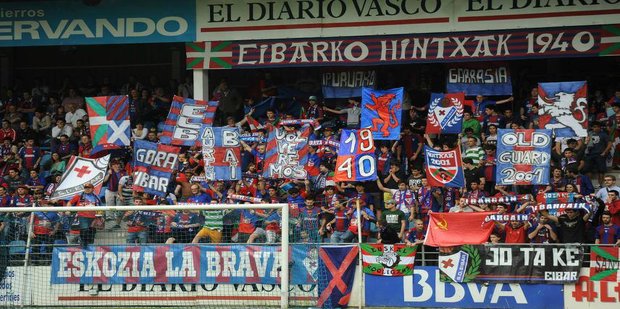

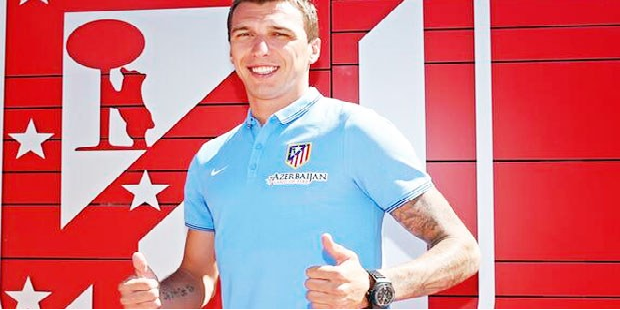


You must be logged in to post a comment Login